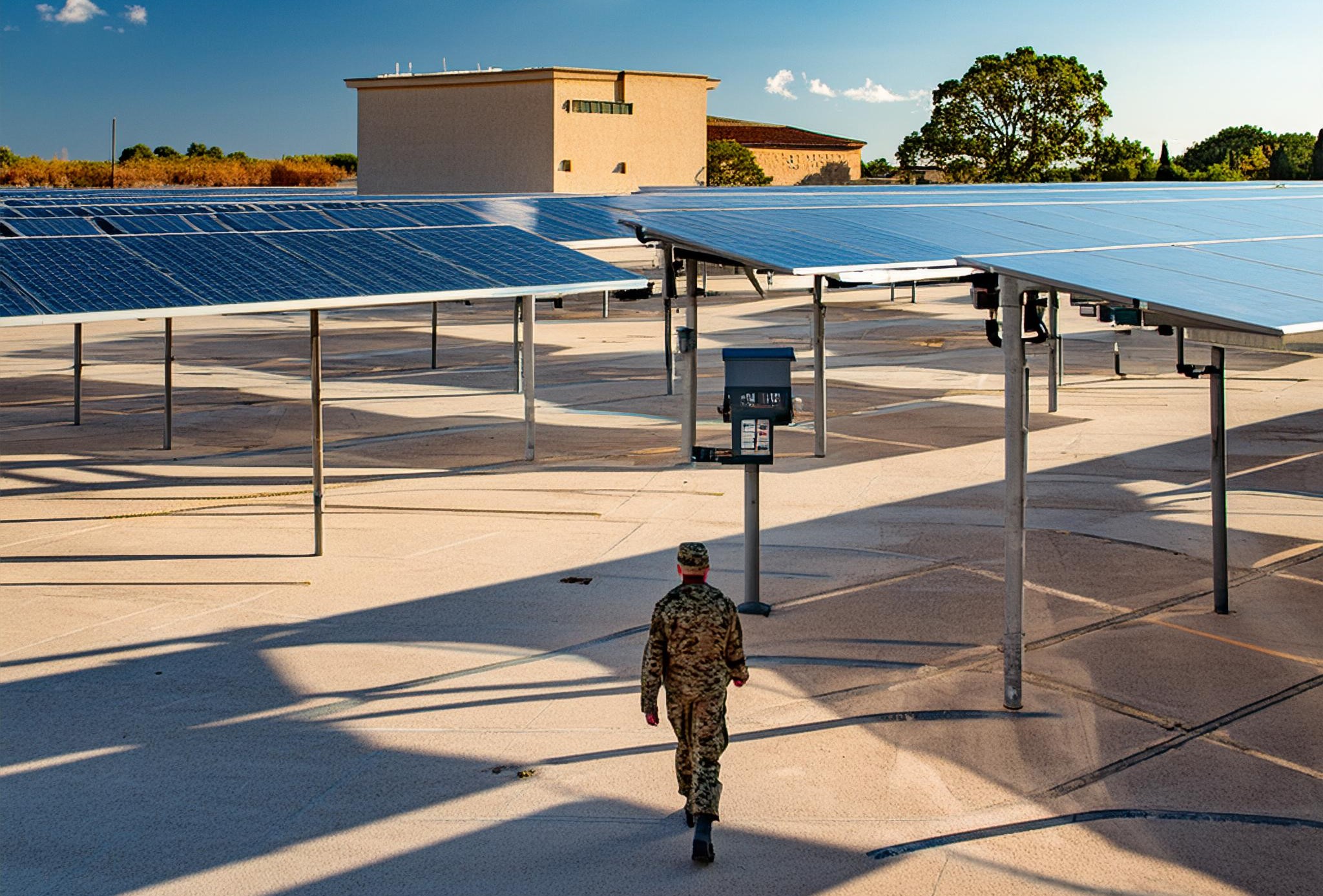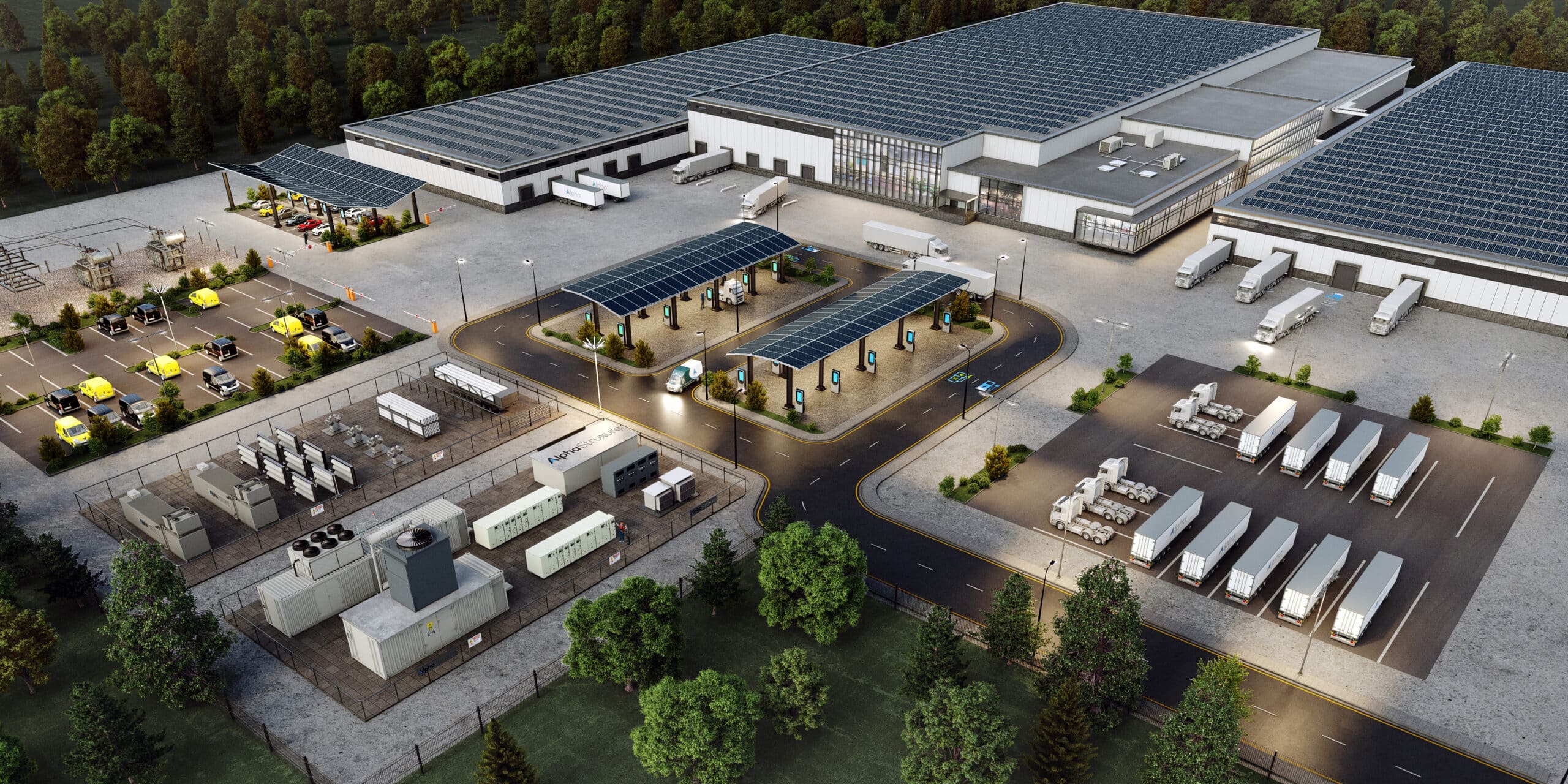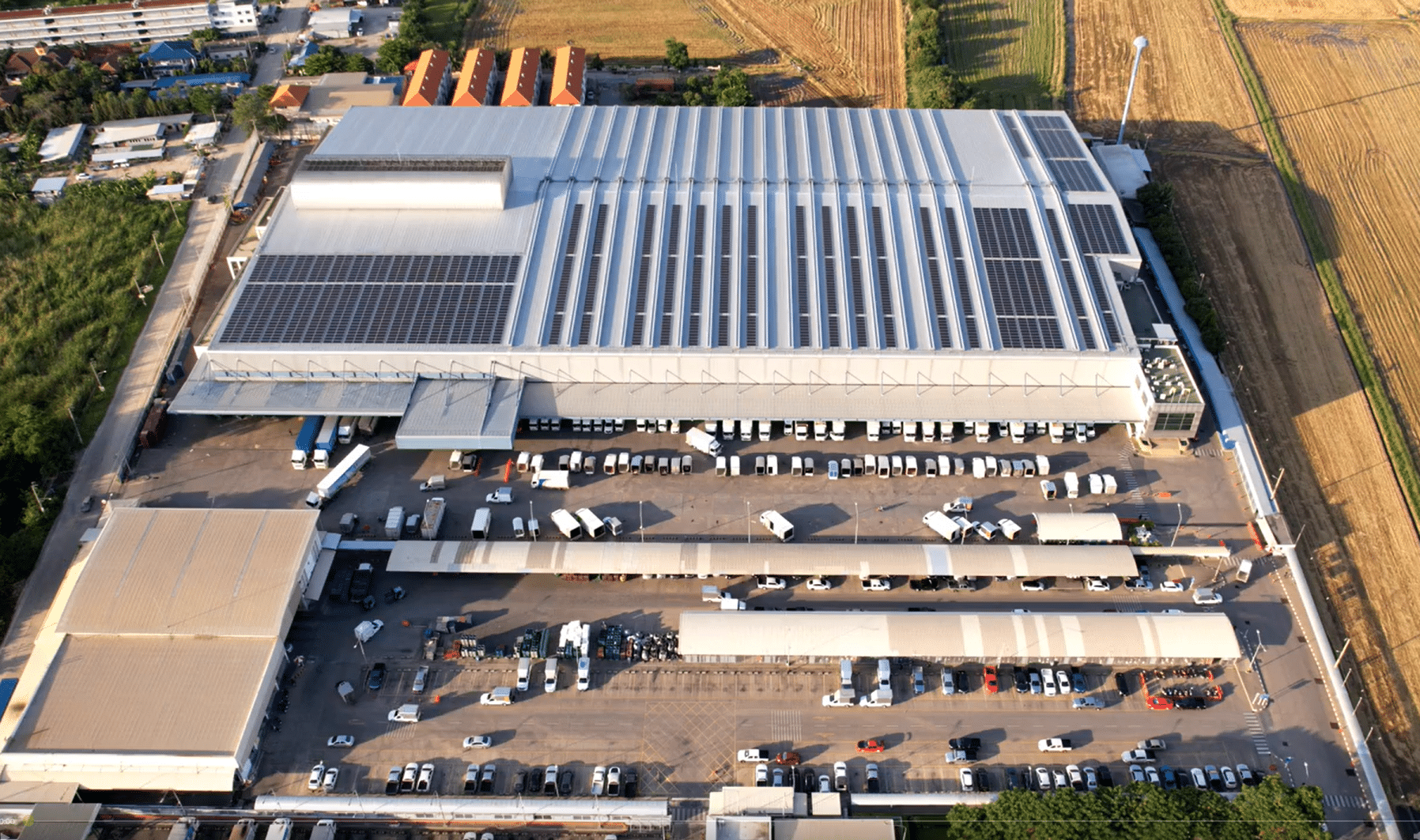Welcome to the Equipment Maintenance & Transit Operation Center microgrid
Fast Facts:
Location: Derwood, Montgomery County, MD
Size: 4.84 MW of solar generation with 2 MW battery storage
Timeline: Construction to last about 1 year, operational by 2026
Project Superlatives:
#1 largest renewable energy-powered transit depot in the U.S.
#1 largest transit depot microgrid in the U.S.
1st bus depot on the East Coast to produce green hydrogen on-site
4,000 metric tons of carbon emissions avoided
Where decarbonization meets resilience
The County has a 2035 target of a 100% carbon emissions reduction and an 80% reduction by 2027. It isn’t just putting forth these ambitious targets, it’s putting infrastructure in the ground at a rapid clip.
The County’s 2024 fleet transition plan calls for replacing 100% of its nearly 400 fossil-fuel-powered buses with a mix of battery-electric and hydrogen fuel-cell electric buses, while also scaling the entire fleet to about 600 buses by 2035. The County is already thinking ahead when it comes to how it will power these zero-emissions vehicles. It’s strategically coupling procurement of both the vehicles and the infrastructure.
The County’s planning wasn’t focused solely on emissions reductions. Service reliability and power resilience were also key. A “derecho” storm in 2012 caused extensive power outages for critical County services, which helped to change the County’s thinking about climate risk. Its transit network is critical infrastructure — experiencing hours- or days-long outages was not an option. The County needed a solution that offered both decarbonization and resilience for its transit fleet. The County, in short, needed microgrids.
Microgrids, minus the risk
What is a microgrid? Microgrids are on-site energy systems that co-locate generation and consumption. Unlike most solar systems, which are grid-connected, and contrary to back-up generators, which only provide power when the grid goes down, microgrids deliver most of the energy a facility or fleet uses day-to-day. That enables a new level of energy management; digital controls can opportunistically source the greenest, cheapest electron at any given moment.
The County first deployed a transit microgrid at its Brookville Smart Energy Bus Depot in Silver Spring, MD. Brookville is currently the largest transit bus depot in the country, a superlative soon to be taken by its bigger sister depot, the microgrid at the David F. Bone Equipment Maintenance & Transit Operation Center, or EMTOC. Like Brookville, EMTOC’s microgrid will be constructed in about a year, which is faster than typical utility upgrades.
The EMTOC microgrid broke ground in June 2024. It will be one of the most advanced microgrids the country has seen due to how big, how green, and how digitally intelligent it is. Its primary use, to power hydrogen electrolysis, is also an innovative use case. Nearly every other hydrogen electrolyzer in the country is powered by utility electricity, not by green, resilient electricity generated on-site in a microgrid. Once built, it will be able to power all of the depot’s energy needs beyond electrolysis, including five existing buildings, and battery electric bus charging. It will do so with or without utility electricity, and can export up to two megawatts back to the grid.
The EMTOC microgrid will eventually power 200 zero-emissions buses. The current microgrid can scale to support this growth with additional solar, battery, and hydrogen infrastructure over time. The EMTOC depot will be home to a fleet of both hydrogen fuel cell electric buses (FCEBs) and battery electric buses (BEBs). The reason for both is to suit the County’s operational needs: FCEBs refuel faster than BEBs and can serve longer routes without refueling or recharging. Some of the County’s routes run as long as about 300 miles.
Here are the primary components of the EMTOC microgrid:
- 4.84 MWDC of rooftop and canopy solar generation
- 2 MW / 6.88 MWh battery energy storage
- Up to 2.25 MW of charging capacity
- 1 MW hydrogen electrolyzer (procured directly by the County)
- Software tools and IoT-connected hardware
Partners in Progress
Montgomery County needed a partner to help it deploy ambitious microgrids. Most organizations that aren’t in the energy business, such as Montgomery County, do not want to become operators of highly complex small scale on-site power plants. The County knew it wanted to put this job in the hands of an expert partner. It also wanted a partner that could operate at the scale of an entire County’s fleet transition, one with financial and technical capabilities to scale its needs.
To manage the risk of deploying a large-scale microgrid, the County selected AlphaStruxure in a competitive bidding process.
AlphaStruxure enables the County to de-risk its fleet transition pursuits via Energy as a Service (EaaS). With EaaS, the County transfers away financial and operational risks of building and operating complex on-site energy infrastructure. The contract puts performance guarantees on key outcomes around construction timelines, long-term energy and maintenance costs, and system reliability. In a time when construction lead times are unpredictable, energy costs volatile, and maintenance budgets vulnerable, AlphaStruxure’s EaaS provides a key enabler to make these projects succeed on-time, on-budget, on-target, and for the long term.
A national leader in zero-emissions transit
With Brookville and EMTOC microgrids underway, the County continues to set the pace among other municipalities when it comes to deploying sustainable infrastructure. “Projects like these are critical to achieving Maryland’s ambitious clean energy goals while making local public transit more reliable and cost-effective,” says U.S. Senator Chris Van Hollen. U.S. Representative Jamie Raskin concurs: “I’m confident this project will serve as an inspiration for other local governments exploring sustainable energy transitions … By breaking ground on America’s largest electric bus depot, Montgomery County continues to lead the country with investments in creating a clean energy future for our children and grandchildren.”
The EMTOC microgrid’s impact extends outside the borders of the County. As the country’s largest transit depot microgrid and one that combines both hydrogen and battery electric buses, the microgrid lights the way forward for the thousands of fleets around the country yet to be transitioned. Data from the Department of Energy shows there are about 72,000 transit buses in the country. Almost all of them still emit carbon. There are also thousands of transit depots around the country. Almost none of them have both resilient and sustainable energy. Montgomery County is showing the United States that zero-carbon transit is possible at speed and scale.
EMTOC Microgrid Case study
The Challenge
- Reduce greenhouse gas (GHG) emissions 100% by 2035
- Transform the Equipment Maintenance & Transit Operation Center (EMTOC) into a self-sustaining bus depot to power a mixed fleet of 200+ buses with renewable energy.
- Produce green hydrogen on-site to support fuel cell electric buses and enhance the county’s Bus Rapid Transit (BRT) network, which serves a significant number of low-income and minority communities
- Protect transit bus services under any power circumstances by delivering a ready supply of sustainable, resilient, and cost-effective power for the new bus fleet
The Solution
- Create a public-private partnership between Montgomery County and AlphaStruxure to design, build, finance, own, and operate the microgrid, using the County’s forward-thinking energy purchasing regulations
- Deliver a microgrid consisting of 4.84 MW of solar, 2 MW/7.35 MWh battery energy storage, and over 2 MW of charging capacity
- Power an on-site electrolyzer powered by solar and battery energy storage that will enable green hydrogen production to support FCEBs
- Engineer the microgrid to interconnect to the utility and sell back (net-meter) up to 2 MW while also retaining ability to operate in island mode, ensuring uninterrupted service during power disruptions and day-to-day energy that is sustainable and cost-effective
- Provide the solution at no upfront cost through a Energy as a Service agreement, ensuring predictable operating expenses and guaranteed performance for emissions reductions, resilience, reliability, and construction timelines
The Results
- Deliver resilient transit operations for the County’s 1.1 million residents, ensuring buses can operate in the event of a main grid outage.
- Advance the County’s goal of reducing carbon emissions 80% by 2027, and 100% by 2035 with a 4,000 metric ton reduction in Scope 1 and 2 carbon emissions
- Become the largest renewable energy-powered bus depot and the largest transit depot microgrid in the nation
- Become the first depot on the East Coast to produce green hydrogen on-site
- Lock in long-term cost predictability of energy supply
- Entrench Montgomery County as a national leader in fleet electrification and a sustainability archetype for local governments across the country — all with zero capital outlay




